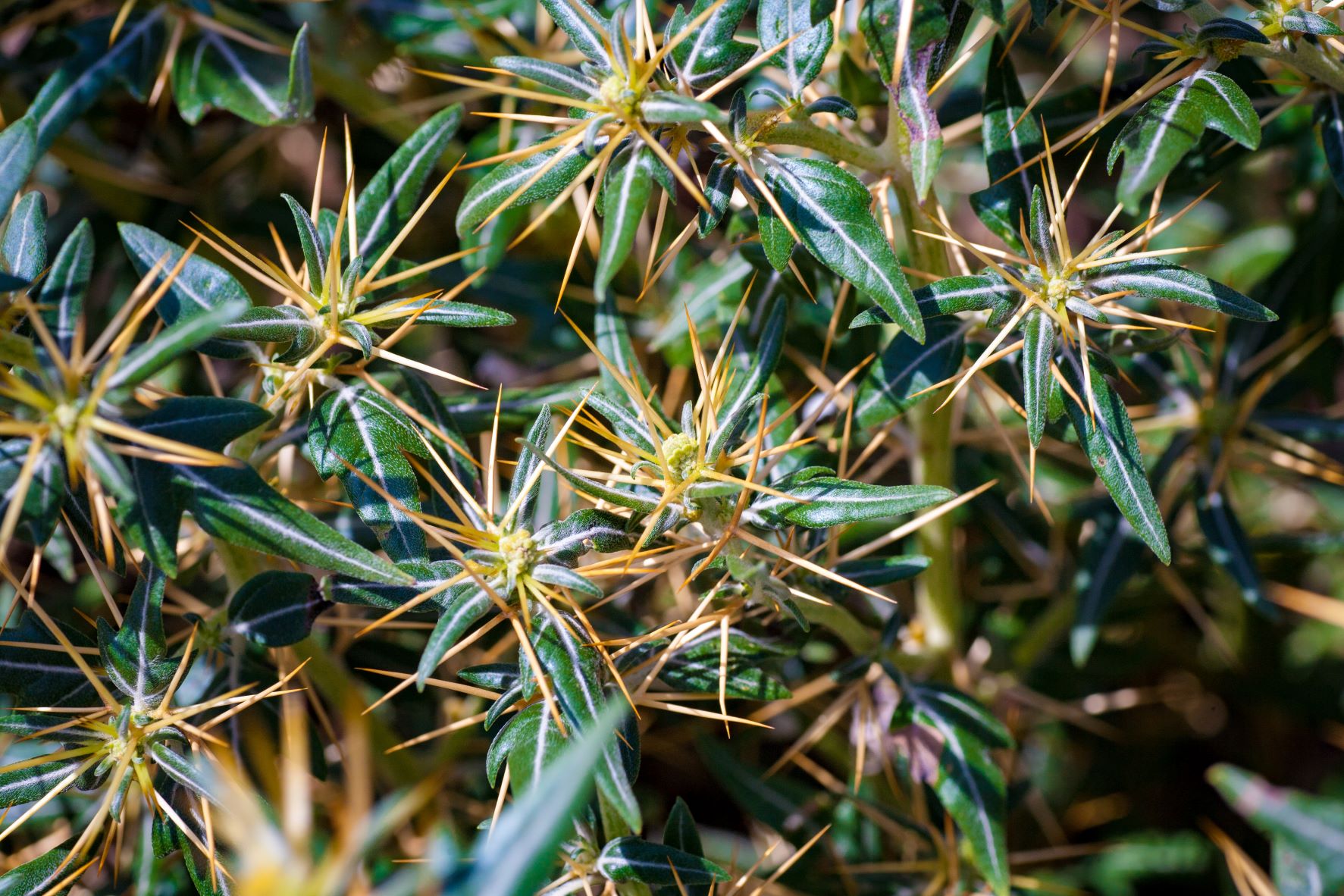The race to curb Bathurst burr
06 Dec 2021
 PRODUCTION ADVICE - DECEMBER 2021 - AGRONOMY
PRODUCTION ADVICE - DECEMBER 2021 - AGRONOMY
By John Fowler
Extension Agronomist
P: 03 5881 9933 | M: 0427 079 138 | E: john.fowler@lls.nsw.gov.au
 Unfortunately, it looks like this season will be a bad one for Bathurst burrs. The hard seed that has remained dormant for the past few seasons will germinate soon, along with any of the soft seed from recent burrs. The good news is this means controlling this season’s burrs could substantially reduce the population going forward. The challenge is to do it safely.
Unfortunately, it looks like this season will be a bad one for Bathurst burrs. The hard seed that has remained dormant for the past few seasons will germinate soon, along with any of the soft seed from recent burrs. The good news is this means controlling this season’s burrs could substantially reduce the population going forward. The challenge is to do it safely.
The issue is that 2,4-D, the chemical most used for broadacre burr control, has the highest drift hazard onto broadleaf crops, like cotton. So, if you are planning a Bathurst burr control program, there are several things you must keep in mind.
Proximity to cotton
The first thing to consider is how far you are from sensitive crops, particularly cotton. You can do this by viewing the cotton plantings on satacrop (satacrop.com.au) which lets you know where the crops in your area are located (you can even measure the distance from your property to nearby cotton crops). If you are within 10 km of a cotton crop, you should avoid any phenoxy herbicide, such as 2,4-D or MCPA. Instead, herbicides like glyphosate (e.g. Roundup®), fluroxypyr (e.g. Starane Advance®) and metsulfuron methyl (e.g. Associate®) are much better options in these zones.
While using phenoxy herbicides is not advised within 10 kilometres of cotton, some can be used, but only after discussions with landholders with sensitive crops and by following strict safety procedures. Here are some other tips:
- Only amine chemical formulations can be used, not LV Ester formulations.
- Spraying should only occur during the day, preferably morning, when no temperature inversions are present.
- Spraying should not occur if conditions are too calm or too windy. Wind speeds need to be between 3 and 20 km/hr.
- Apply herbicides when the temperature is below 28o C, (definitely not above 32o C) and when the Delta T is below 10. Weather conditions are best monitored on-site with a reliable portable weather device.
- Spray droplets used to apply the herbicide need to be very coarse. This means that only nozzles that produce minimal driftable fines, such as TTIs, can be used. Traditional flat fan nozzles, and even some of the air-inducted nozzles, are not suitable.
- Boom height should be no more than 50 cm above the target weeds and travel speed should not exceed 18 km/hr.
Non-sensitive zones
Even if you are more than 10km from sensitive crops, controlling burrs still needs to be done carefully. All the safety steps for crops within 10 km of cotton should still be followed, although there are potentially more herbicide options.
Within non-sensitive zones, phenoxy herbicides can be more readily used, but again it is still preferable to use amine formulations.
The weather conditions, droplet size, boom height and travel speed are basically the same as for spray areas closer to sensitive crops
Application records
Application records are a legal requirement. They need to be made within 24 hours of application, written in legible English and kept for three years. Records require over twenty different observations or measurements to be made, including information on the:
- property
- applicator
- times of application
- herbicide
- equipment
- nozzles, and
- weather
Details of the records required can be found in NSW DPI spray guides such as ‘Weed control in winter crops 2021’, which you can find on the NSW DPI website.
You must also record any rainfall for the 24 hours before and after application (although some labels prescribe a different time after application.)
The final challenge
Burrs, like most weeds, are difficult to control when they are not actively growing. If we get hot, dry conditions after the burrs germinate, they will continue to grow and set seed, but will be more difficult to control with herbicide. For the best results they should be sprayed within seven to ten days of a significant rain event.
Remember, everyone has a legal (and moral) obligation to ensure chemicals do not drift from their property and cause damage to others. All landholders need to actively and consistently manage their spray operations to prevent any future problems. Failure to do so could have negative consequences for all involved.